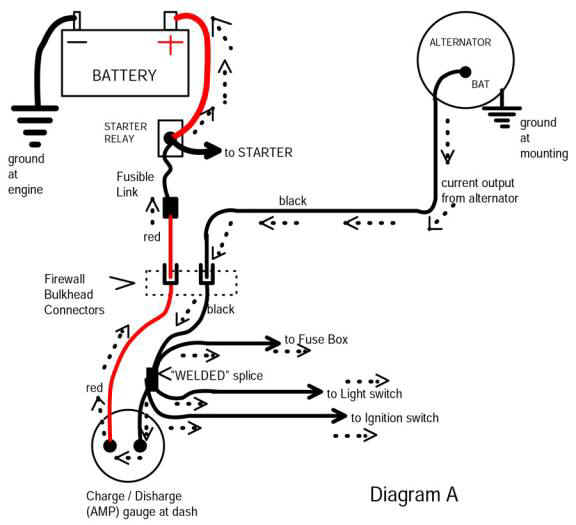You are on the right track but you have to understand how "this works."
Start by reading the Mad article, which points out the problems in the old wiring in these girls, and look over the simplified diagram on that page:
Catalog
Follow the "path" from the battery. You are getting a voltage drop somewhere between the battery and the VR IGN terminal
From the battery, through to the junction stud on the start relay, through the fuse link, through the BULKHEAD CONNECTOR (RED) to the AMMETER, through it, out on the BLACK ammeter wire, and to the WELDED SPLICE. That branches off and feeds power to
the HEADLIGHTS only power to the light switch
the HOT BUSS in the fuse panel
the FEED TO the IGNITION SWITCH, so to the IGNITION SWITCH CONNECTOR, THROUGH THE SWITCH, OUT THE SWITCH CONNECTOR (on the blue "ign run" wire.......back through the BULKHEAD CONNECTOR........to the ignition, the VR ign terminal, and other underhood loads.
EACH point in CAPS is a potential problem area. It is rare, but there has been a few cases whereby the welded splice itself has loosened up.
In no real order, your top suspects are the bulkhead connector, the ignition switch connector, the ammeter and it's connections, the ignition switch, and as mentioned "rare" the welded splice.
If you don't have one, waltz over to MyMopar and download yourself a free service manual. Some of those there, came from the guys here at FABO
MyMopar - Mopar Forums & Information - MyMopar Tools/Reference
VOLTAGE DROP in the ignition feed to the VR is probably the number one reason for over charging/ over voltage.
Other causes are:
Voltage drop in the ground to the VR, IE between VR and battery NEG
a bad VR
a bad battery.



 . the first one that I bought the plastic back plate completely just fell off so I'm sure this one is going to be close to it
. the first one that I bought the plastic back plate completely just fell off so I'm sure this one is going to be close to it














